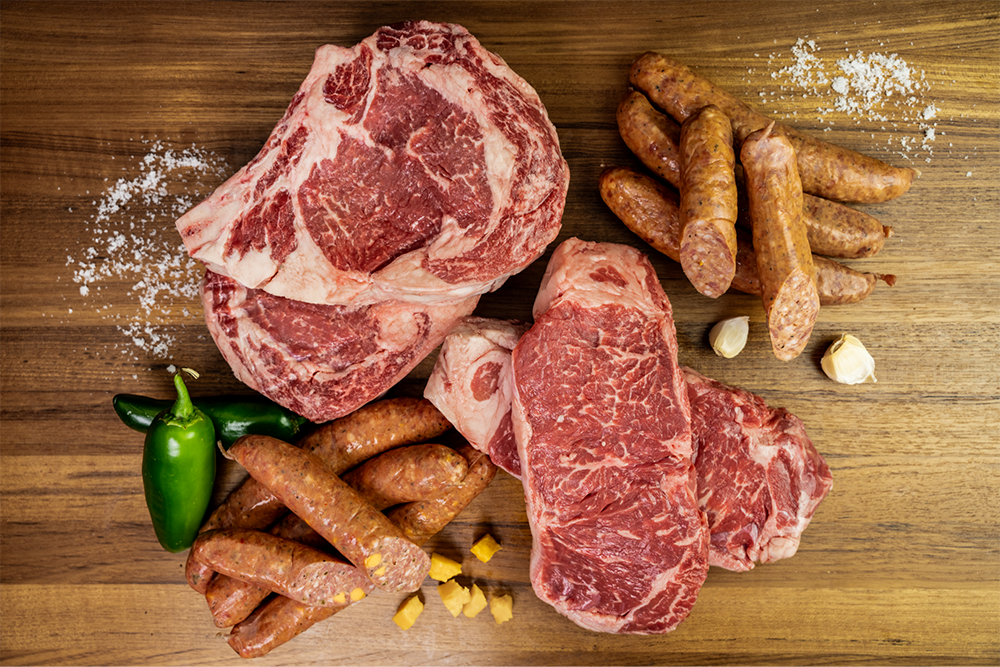Reveal the Art of the Butcher's Cut in a Modern Meat Market
In the ever-evolving landscape of modern-day meat markets, the butcher's cut has actually transcended its typical roots, combining age-old workmanship with contemporary practices. bagley farms meat market edwardsville il. Today's butchers are not simply processors of meat; they are well-informed artisans who highlight sustainability and moral sourcing. Their know-how in selecting and preparing cuts tailored to particular cooking needs supplies an unequaled dining experience. What genuinely establishes the contemporary butcher apart is their capacity to build a much deeper link in between customers and the origins of their meat. Exactly how do these masters balance custom with advancement, and what implications does this have for the future of meat usage?
Development of Butchery Methods

The mid-20th century saw butchery techniques additionally fine-tuned by clinical insights right into muscle mass biology and meat aging, boosting both tenderness and taste. Advancements like vacuum cleaner packaging and refrigeration prolonged product shelf-life, permitting butchers to diversify offerings and boost high quality control. This period likewise marked the increase of specialized tools, such as band saws and meat slicers, which raised accuracy and performance in meat handling.
The 21st century has presented digital technology right into the butchery realm. Digital systems now help in monitoring pet provenance and maximizing cuts to satisfy particular consumer choices. In addition, a renewal in artisanal butchery has emerged, blending standard skills with modern-day understanding to satisfy consumers seeking ethical and lasting meat alternatives. This development emphasizes a dynamic interaction in between tradition and development, meeting modern needs while protecting the craft's heritage.

Recognizing Meat Cuts

Understanding the complexities of meat cuts is important for both butchers and consumers seeking top quality and value. Each cut comes from a different part of the pet, presenting one-of-a-kind tastes, appearances, and food preparation techniques. Proficiency of these differences not just enhances culinary experiences but also makes the most of the energy of each carcass. For butchers, specific cuts reflect skill and regard for the craft, guaranteeing very little waste and optimum yield.
The main groups of meat cuts include primitive, sub-primal, and retail cuts. Primal cuts, such as the loin, rib, and chuck, are the big sections originally divided from the carcass. Butchers then damage these down even more into sub-primal cuts, prior to lastly creating retail cuts available to customers, like ribeye or tenderloin. Each stage requires cautious focus to physiological structure and muscular tissue structure.
Recognizing muscle make-up is vital; muscle mass utilized much more frequently by the animal have a tendency to be tougher and are best fit for slow-moving cooking methods, while less-used muscle mass, like those located in the loin, are a lot more tender and perfect for cooking or roasting. Experience with these differences encourages customers to make educated selections, improving their culinary endeavors.
Choosing Top Quality Meat
Selecting the best meat entails more than simply picking an aesthetically enticing item from the screen. The art of picking top quality meat calls for a critical eye and expertise of certain qualities that symbolize quality and quality.
Second of all, take into consideration the marbling, which refers to the white streaks of fat within the muscular tissue. Proper marbling is a key indication of tenderness and flavor, as it melts throughout food preparation, enhancing the meat's juiciness. Keep in mind, higher marbling typically correlates with superior quality cuts, such as USDA Prime.
Appearance is another important aspect; meat ought to feel firm to the touch, not slimy or overly soft. Additionally, bear in mind the fragrance. Fresh meat must have a tidy, neutral odor, without any kind of sour or repulsive smells.
Coupling Cuts With Cooking Methods
Effectively coupling cuts of meat with the suitable food preparation techniques is important for accomplishing ideal taste and structure. These methods enhance the meat's all-natural tastes and make sure a juicy surface.
Alternatively, harder cuts like brisket and chuck roast are rich in collagen, which damages down into gelatin when Discover More prepared gradually. These cuts are excellent for braising or slow roasting, enabling the meat to soften with time and create deep, complex flavors. Cuts such as brief ribs and pork shoulder get on well with slow-cooking approaches, where expanded cooking times transform their durable appearances into succulent meals.
Lamb shanks and oxtail, which require long term food preparation to soften, are perfect candidates for cooking or sluggish simmering. These approaches coax out try this website abundant, passionate tastes while preserving dampness. By understanding the distinct characteristics of each cut, cooks and home cooks alike can raise their cooking developments, making sure each dish is both satisfying and memorable.
The Butcher's Duty Today
Browsing the advancing landscape of the modern meat market, the butcher's role today expands beyond mere preparation of cuts. Contemporary butchers are culinary craftsmens, teachers, and supporters for lasting practices.
In addition to crafting accurate cuts, butchers currently engage directly with customers, offering cooking suggestions and customizing choices to fit individual requirements and choices. Their experience in meat aging, marbling, and taste profiles empowers customers navigate here to make enlightened decisions, improving their cooking experiences. This personalized solution exemplifies the butcher's evolving duty as a trusted consultant in the kitchen area.
Furthermore, butchers are critical in lessening waste, using entire pets to develop diverse products such as sausages and supplies - bagley farms meat market edwardsville il. This thorough technique not just respects the animal but additionally lines up with modern sustainability objectives. This way, the modern-day butcher embodies both custom and development, adjusting to an ever-changing market while protecting the artistry and integrity of their craft

Verdict
Mastery in comprehending diverse meat cuts and top quality signs empowers butchers to provide enlightened recommendations, aligning particular cuts with optimum cooking approaches. By recognizing historic techniques while accepting contemporary needs, the butcher's function stays vital in today's advanced meat market.